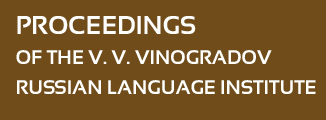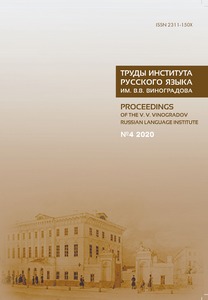LEONID KRYSIN’S IDEAS IN SARATOV STUDIES OF ORAL SPEECH
Abstract:
The paper examines the infl uence of L. P. Krysin’s scientifi c ideas in the fi eld of vocabulary, semantics, stylistics, sociolinguistics, speech portraiture, theory of sociolects, concept of foreign-language word, colloquial speech on the research of Saratov Russianists. The scientist’s fundamental theoretical works served as the basis for comprehensive studies of individual sectors of modern oral communication: oral speech of entrepreneurs, modern informal communication and corporate communication. The analysis of oral speech of Russian entrepreneurs showed the formation of corporate consciousness, the dependence of speech characteristics on the level of education, profile of activity, business format, degree of proximity to criminality. A comprehensive study of informal communication made it possible to develop a field model of informal communication, including family communication in the core zone, and communication between acquaintances and strangers in the peripheral zone, and to characterize them taking into account the social roles of communicants, goals, topics, temporal-locutionary and other features of communication. The speech specifi city of the new type of business communication — corporate communication — was established in collaboration with an international Russian-Austrian team of researchers. The principles of sociolinguistic analysis, including the structure of speech portrait analysis proposed by L. P. Krysin, are used as a basis for studying the oral speech of representatives of various professional, social, gender and age groups of Russian society. The concepts of social role and social status substantiated in his works served as a starting point for formulating the criteria for the effectiveness of speech communication. The concept of a foreign-language word, materials from the dictionary of foreign words were reflected in candidate and master’s theses devoted to the nature and fate of borrowings from the Arabic language, as well as lexical and stylistic parallels and nationally specific differences between the Chinese, Korean, Turkish and Russian languages.


